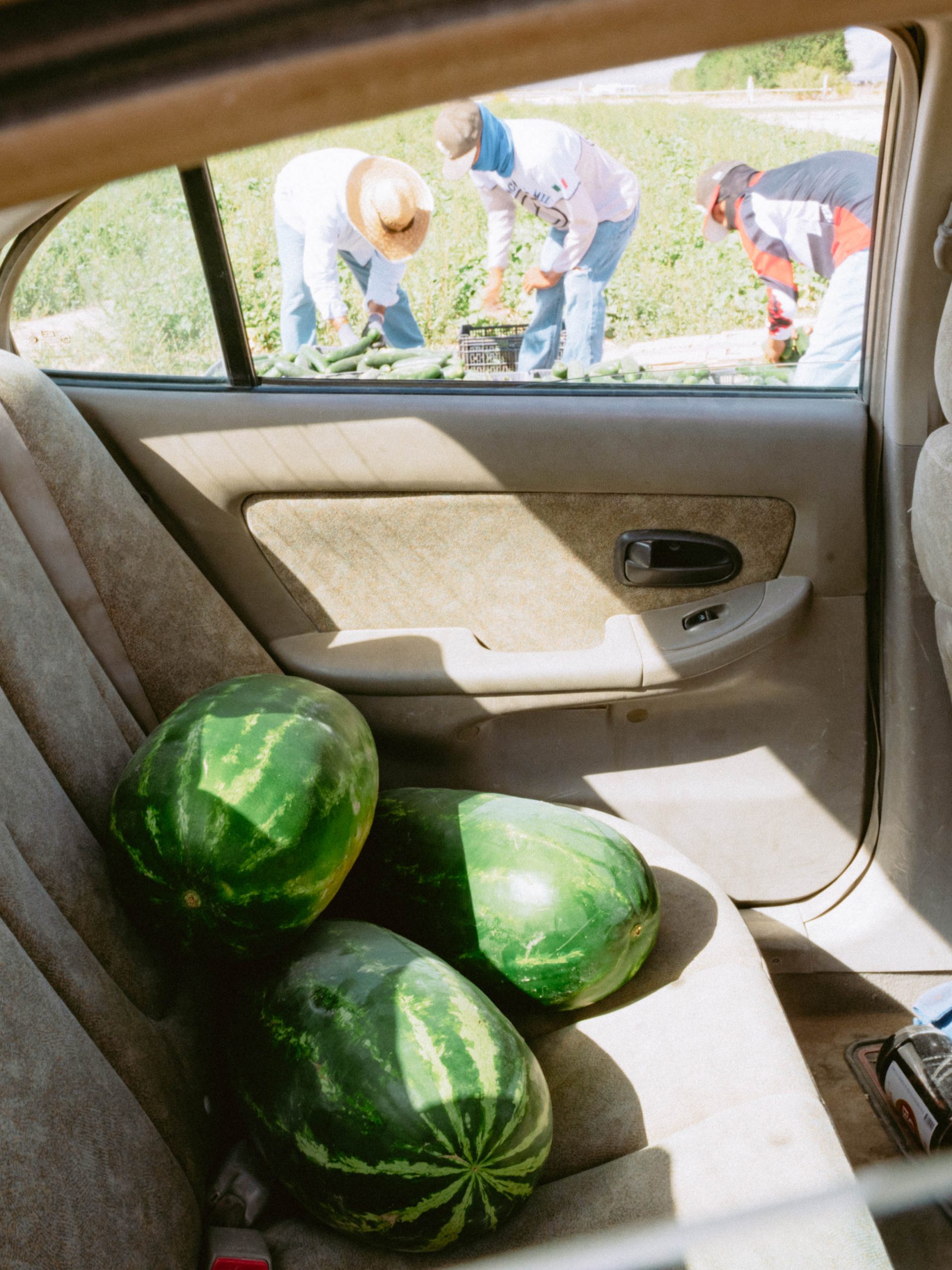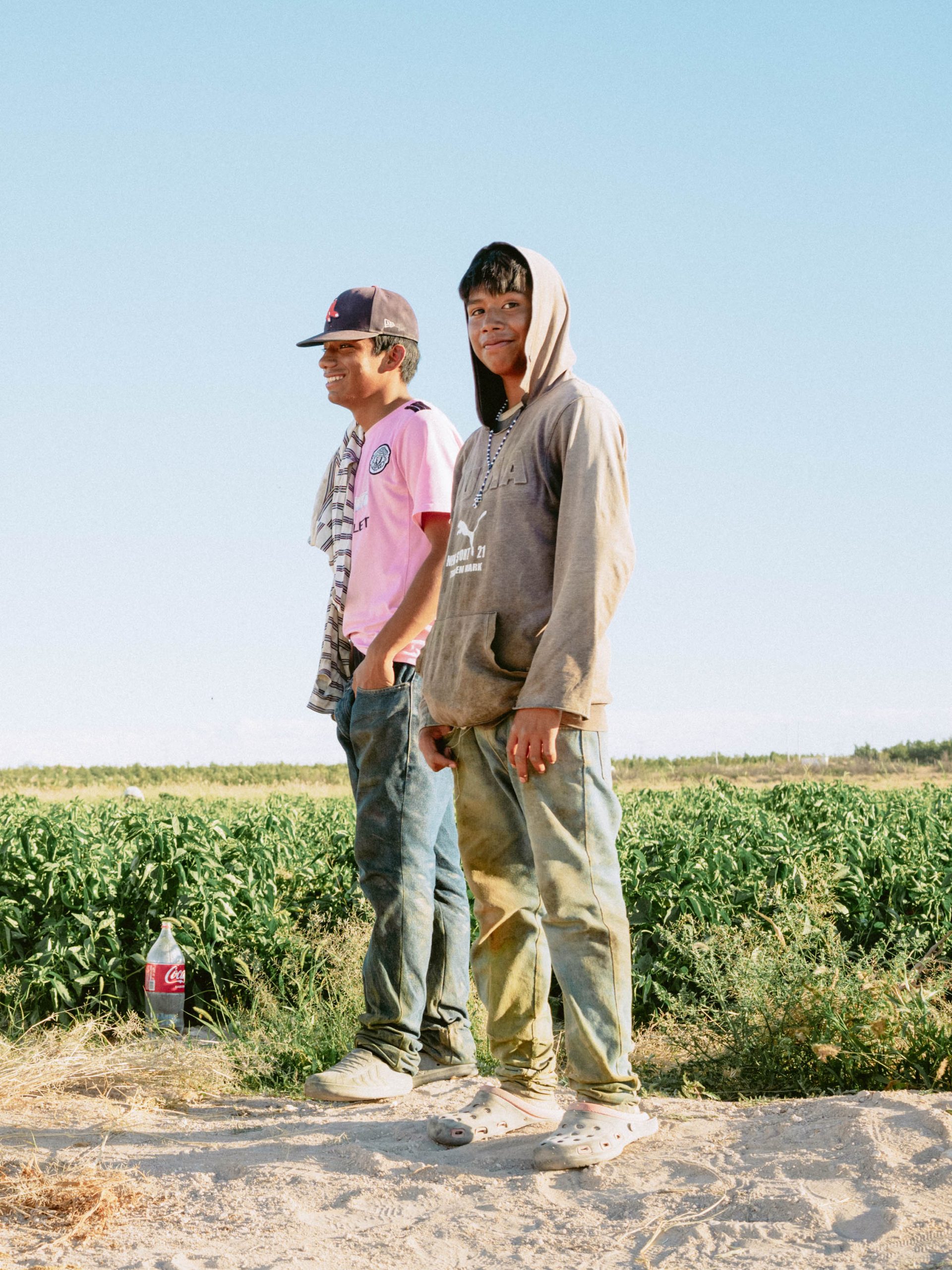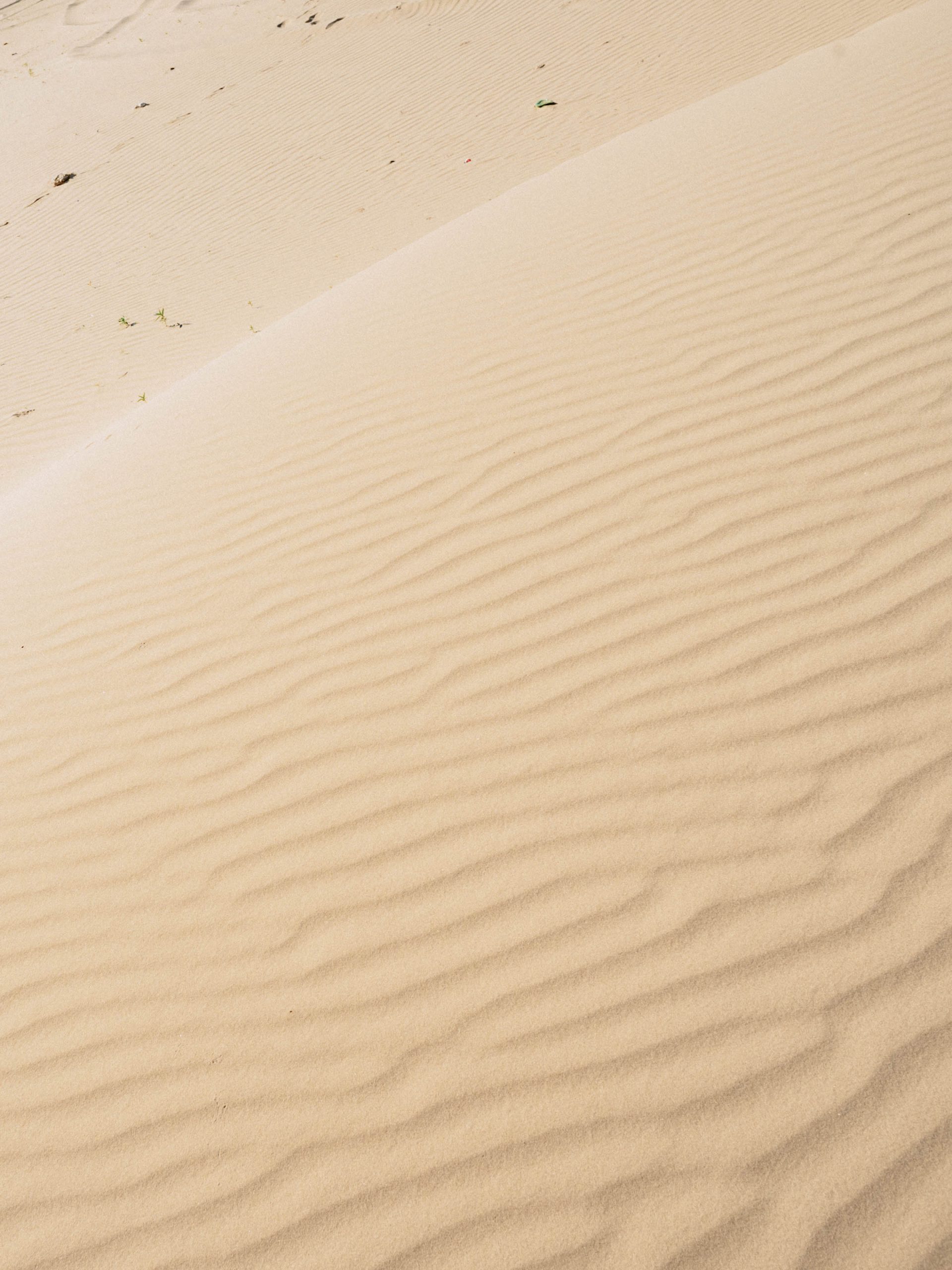

A city surrounded by vast desert
The town of Samalayuca is located around 50 kilometers south of Ciudad Juárez on the national highway. It’s a lonely, quaint town surrounded by a desert landscape, where its main street is lined only with a couple general stores and auto body shops.
Feeling hungry, I found a diner and opened its door. The interior was dimly lit, but I could see the female employees were busy chopping heaps of cilantro at the back counter. I ordered a hamburguesa (hamburger) and a cola. Although there was only one family of customers besides me, there were five or six employees rushing to prepare food. When I inquired, one of the ladies said in quite a hurried tone, “many customers will come today because there’s a festival”. I had completely forgotten the purpose of my trip here; tomorrow was Mexican Independence Day. While the capital, Mexico City, will be lively with grand fireworks tonight, I came to this small town to avoid all the commotion. They informed me that there will be a modest eve celebration taking place in the town square tonight.

“I heard there are sand dune close by”, said my travel partner and editor Mr. Maruo. When I checked Google Maps, the east side of the town was indeed surrounded by an enormous desert landscape, but the walk there would take around two hours. It seemed ridiculous to walk to see sand dunes from a desert town, but since we had plenty of time until the festival, we decided to head there.
We left the town and walked through the desert. The landscape stretched endlessly with shrubs and cacti sporadically growing through the dry gravel. The strong, no, violent sun mercilessly burned our skin, causing sweat to pour like waterfalls. I began to regret our decision immediately.

I’ve walked vast landscapes in Ukraine before. The soil there was more fertile and sticky, clinging to the soles of your shoes like mud after the snow melted. Back then, I even hesitated to go through patches of grass, since it was possible there were landmines and unexploded bombs still buried underground. I was repeatedly told by Ukrainian soldiers to “always walk in the middle of the road”. That fear still resides, and my legs involuntarily shake every time they trail off the road. I know in my head that this is a completely different soil I’m walking on, but I still carry that memory.



I saw some men harvesting watermelon, zucchini, and other gourd vegetables in the distance. One of them noticed us, picked up a rolling watermelon, then took out a knife from his pocket. He placed the watermelon on the hood of the car parked on the side and skillfully sliced it open. The inside glistened and reflected the Mexican sun. Apparently, this was his invitation for us to taste it. Gratefully, we both took a bite. It was milder than a Japanese watermelon, but it was so juicy that its juices spilled from our mouths. How could such crops thrive in a desert? They watched us with satisfaction as we enjoyed the fruit. Among them was a middle school-aged boy. I tried speaking to him, but after giving a shy smile, he looked down and silently returned to work. We asked them about tonight’s festival. Of course they knew about it.

We walked even further into the desert. There were some slight ups and downs, but the landscape remained largely unchanged. We relied solely on Google Maps on our smartphones to lead us through. My skin was tingling from the sunburns, but I felt an even sharper pain in my foot. It was a thorn from the shrub branches that were scattered everywhere. One of those thorns pierced the sole of my shoe into the bottom of my foot. The shoes I bought at a discount store in Tokyo for 1,900 yen served me well through the harsh landscapes of Ukraine, but they were ultimately cheap. I had worn them out, the soles deteriorating. I took my socks off to find blood oozing out of the sole of my foot. Fighting back tears, I pulled out the thorn and continued to walk the thorny path. The dangers of Ukrainian landmines and Mexican thorns don’t even compare – but it was painful nonetheless.

After repeatedly pulling thorns from my foot, we finally arrived at the sand dunes. They resembled the bottom of an ocean that had been drained of water. There were tall sand mountains in some places and some deep depressions in others. The landscape seemed to stretch endlessly, which felt more unsettling than moving. There was nothing to focus our eyes on among the boundless and desolate terrain. It was impossible to fathom how vast it really was. And we were only still at the entrance of the dunes. We climbed over one of them and saw transmission towers and power lines in the distance. All the way here. Humans are truly remarkable beings. I looked down at my feet and saw an empty bottle of beer. All the way here. Humans really are remarkable beings… It was an unexpected discovery that brought me joy.

The Eve of the Mexican Independence Day Celebration
The feel of the town had changed completely when we got back in the evening. It felt much livelier than the somber atmosphere of the daytime. Men were bringing in cold beers one after the other, and mothers were chasing after their mischievous kids running around. Vendors lined the square, their lights glimmering. As I was basking in the nostalgia, suddenly, I heard a horn. A train with headlights lit up on the rails extending to the horizon was visible beside the square. It was a freight train carrying hopeful South American immigrants we had encountered in Ciudad Juárez. There were men, women, and children in between the train cars and on the roofs. They were likely heading to the U.S. border. Someone on the train yelled, “VIVA MEXICO!”, and the townspeople waved back. We were witnessing a moment where locals who were enjoying the festival crossed paths with those who hopped on the train to leave their hometown.



The hustle and bustle of the festival returned immediately after the train passed. The music started, and the locals started dancing, expanding their circle. Unlike the dance we encountered by chance in the Northeastern Mexican town of Monterrey, which was meant to captivate an audience, this dance was for pure enjoyment. The moves weren’t flashy, but the people moved their bodies and engaged in a cheerful atmosphere. The boy we saw farming in the desert was there as well. He was dancing with a girl who was around his age. He looked more dignified, quite different from when he was carrying the watermelons.
We naively thought we would be able to hitchhike back to Ciudad Juárez after taking photographs of the festival. The dancing, however, would not cease even as the clock struck 2 am. There were no cars trying to leave, and no hotels to stay in. Our only option was to camp out. We had no choice but to wear all the clothes we had stuffed in our backpacks to act as a makeshift sleeping bag, and lay down in the shadows of a building next to the square. I regretted my lack of foresight, but camping out in this small town on Independence Day didn’t seem like a bad idea.




I awoke at around 6 am. It seems Mr. Maruo couldn’t sleep because of the cold. The now abandoned square was littered with trash, making it a feast for the stray dogs. Like the dogs, we were also hungry, and decided to peek inside yesterday’s diner. This place also must have been busy until late last night. I could still feel the presence of all the customers who had left. The female employees weren’t smiling like they were yesterday. They instead continued to work looking very tired.

Photography Hironori Kodama

